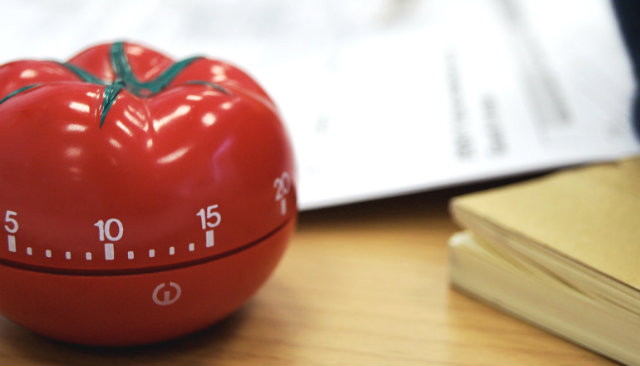Have you heard of the Pomodoro Technique? It’s an interval-based productivity method, developed by Francesco Cirillo. By making use of a timer, created “space repetitions” and your own will, you too can master your day. The Pomodoro Technique has become popular due to its accessibility, adaptability and scientific grounds for success.
But what about other time management and productivity techniques? Does the Pomodoro Technique deserve its fame? Are there other approaches, strategies, or apps out there that might be a better fit for you?
Let’s take a closer look at the Pomodoro Technique as well as four highly rated alternatives. By examining the science, benefits, and weaknesses of each, we’ll help you determine which technique serves your productivity needs and challenges the best.
 The Science Behind the Pomodoro Technique
The Science Behind the Pomodoro Technique
Gauging your productivity within a given time frame, reportedly, is one of the most effective ways to increase it. While researchers aren’t sure why this is the case, they’ve still managed to prove its positive impact on memory function. Scientific American asserts that Cirillo’s book, The Pomodoro Technique, is deserving of its two-million-reader count.
The Pomodoro Technique works by encouraging people to work alongside their resources. Time, in the Pomodoro Technique, is the main resource. The Pomodoro Technique also uses positive psychology to boost motivation. It breaks up the workday into 25-minute chunks — each separated by five-minute “leisure” breaks. These 25-minute intervals, called Pomodoros, are essentially periods of extreme focus.
At its core, the Pomodoro Technique works by instilling a sense of urgency. It helps people understand the value of every hour, minute and second. This motivation combination helps Pomodoro Technique users root out distractions and combat the frazzled, tired feeling many of us experience before the day ends.
You can find the official Pomodoro Technique app here. Before you download it, though, let’s check out the leading time-management alternatives — as well as the science behind each of them.
 Alternative 1: Getting Things Done
Alternative 1: Getting Things Done
This productivity method, developed by David Allen, is featured within his book titled — you guessed it — Getting Things Done. The technique has earned a large following, getting adaptations in mobile apps, seminars, classes and across a slew of industries.
Getting Things Done relies on the science of getting as many ideas and tasks out of your head as possible — as quickly as possible. In doing so, you can easily manage them. Getting Things Done also establishes a priority-based action schedule. Tasks that can be done quickly come first. Big projects should be broken into smaller projects.
Getting Things Done as a Pomodoro Technique Alternative
Getting Things Done works well with multi-faceted work days. It’s also superior due to its multi-level “priority” design. There’s also something to be said for small task completion. Studies prove that completing tiny tasks makes us happier, more motivated and even more likely to stay productive.
All that said, Getting Things Done may not be as effective as it could be. By front-loading your schedule with quick motivational “dopamine spurts,” the technique may fail in delivering long-term effectiveness. If you have a long day ahead of you, Getting Things Done might inappropriately weight your productivity.
Alternative 2: The Action Method
The Action Method, both a productivity plan and software product created by Behance, focuses on creating clear, concrete tasks to replace in-depth plans. While it sounds shifty and uncoordinated at first, The Action Method is surprisingly effective.
These small tasks, called “action steps” are listed on a to-do list. They’re then separated from any “references,” or materials needed to be fully accomplished. Much like Getting Things Done, The Action Method relies on the same, small dopamine spurts to boost motivation. Some don’t like the Action Method, as it can make tasks feel cluttered, cramped, and slightly hectic. Others, may love the technique’s clear-view methodology.
The Action Method as a Pomodoro Technique Alternative
The Action Method’s biggest advantage is its creation of bite-sized tasks. This unique approach might benefit you more than the Pomodoro Technique’s time-based foundations. In general, the Pomodoro Technique might be too rigid time-wise for productivity-lovers in search of a new habit.
And planning matters. For this reason, many have written off the Pomodoro Technique due to its lack of overall structure beyond the rigid time frame. The Action Method balances tiny rewards against a daily plan rather well. It’s also potentially balances the bigger picture better than Getting Things Done.
 Alternative 3: Gamification
Alternative 3: Gamification
Let’s discuss Forest — the vision-based productivity app. While Forest is primarily a productivity timer similar to a Pomodoro timer, it includes a happy little feature: the growth of a digital tree. The rules are simple. Once the app’s timer starts, the tree grows. If you use your phone, the tree dies. A Chrome extension exists, too, that blacklists certain websites that may disturb your computer-based office work.
Here’s the best part: by growing trees in the app, you accumulate gold coins. If you save up enough, you can plant a real tree for free. Who doesn’t like being environmentally friendly?
Visual Representation as a Pomodoro Technique Alternative
Apps like Forest simplify the rigorous, boring aspects of timer-setting. This said, Forest offers an unseen benefit which grounds itself in positive psychology — viewing productivity as a positive experience, rather than a negative one.
Timers can be stressful. To a degree, so are long, cluttered lists. For some, the dopamine spurt of completing a micro task may not propel them into deeper productivity. If this is the case, the positive reinforcement of growing a digital tree may be a good alternative. Apps like Forest aren’t necessarily better than the Pomodoro Technique, but the motivation created by visualizing tasks fluidly with here-and-now rewards, may — for some — be a better incentive than individually “checking off” micro-tasks.
 Alternative 4: The Eisenhower Method
Alternative 4: The Eisenhower Method
Talk about an intimidating name. Don’t worry: The Eisenhower Method, also the “Eisenhower Box” is a simple, down-to-earth representation of your daily priorities. Much like the Pomodoro Technique, it’s simple, clear-cut, and pretty effective. Developed by Dwight D. Eisenhower, the Eisenhower Method has continuously been used by those wishing to simplify their day, be more productive and prioritize important tasks.
The Method’s core reflects a quote from the 34th President himself:
“I have two kinds of problems, the urgent and the important. The urgent are not important, and the important are never urgent.”
asically, The Eisenhower Method excels in prioritization — almost to a radical degree. The Eisenhower Box is a four-square table which helps its users determine which tasks need to be done and which should be delegated. It’s touted as an effective long-term strategy planner. If you have difficulty determining which tasks are vital — and which can be put off — the Eisenhower Method is for you.
The Eisenhower Method as a Pomodoro Technique Alternative
The Eisenhower Method may benefit those who struggle with long-term planning much more than the Pomodoro Technique. But because the Method’s “push” comes from future realization, it also lacks short-term value in comparison to the Pomodoro Technique.
Fortunately, the two strategies go together like productivity peas in a pod. Because The Eisenhower Method is far removed from most “here and now” motivational techniques, it can be used as a sort of “background” motivation tool. Try using the Eisenhower Method to line up your week’s goals. Then, break these goals down into small tasks. Finally, use the Pomodoro Technique — or one of the other listed techniques — to conquer them.
Which Time Management Technique Is for You?
Each of us works differently and is motivated differently, so it’s important to find a technique that works for you and isn’t just the latest trend. Similar to the Eisenhower Method’s pairing with the Pomodoro Technique — other techniques can be mixed and matched. Try The Action Method once you’ve determined your long-term goals with the Eisenhower Method. As you’re completing micro-tasks, use a visual representation app — like Forest — to make sure you’re zoned in at all times.
As for the Pomodoro Technique, we feel it’s still effective, but it’s very specific to those who excel in time-based environments. If your brain responds better to time, great. The Pomodoro Technique really is one of the most viable time-based productivity tricks around. But if you’re compelled by micro-tasks, Getting Things Done or The Action Method are sound alternatives that you may want to experiment with.







